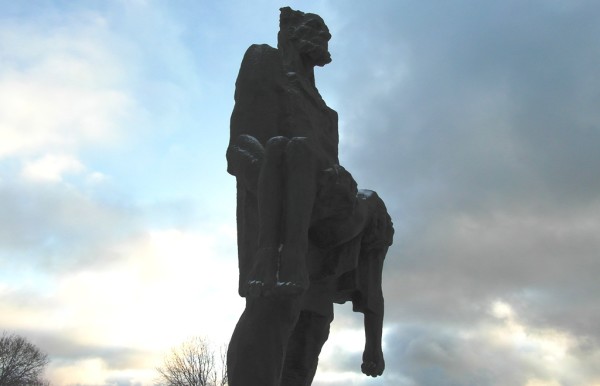
When we arrived at Khatyn, just outside of Minsk, I pulled out my Kindle and started to read to Yuliya and Andrei from my Bradt guidebook:
Khatyn was once a small but thriving community in a picturesque wooded area, but this hamlet no longer appears on even the most detailed map today, other than as a memorial. The atrocity took place on 22 March 1943, when troops of the occupying German army completely encircled the village…
All of the villagers, young and old, healthy and infirm, women, children and babes in arms were driven from their houses at gunpoint and herded into the barn….
When everyone was inside the barn, the doors were barred, the roof covered with straw and the building doused in petrol. After setting it alight, the soldiers positioned themselves on all sides of the conflagration to machine-gun any of the suffocating people who managed to break out.
My voice cracked and I tried to hide the tears welling in the corners of my eyes as I continued to describe the massacre that killed 149 people, including 75 children.
Although Andrei was born in Belarus and Yuliya has lived there for nearly a decade, neither had ever been to Khatyn. Visiting with them and reading the story of the tragedy made it all the more poignant.
Looming large at the entrance to the memorial is a bronze sculpture, six meters tall, of Joseph Kaminsky – the only adult to witness and survive the massacre. Fittingly titled “the Unconquered Man,” the figure represents Joseph holding his son as he died in his arms.
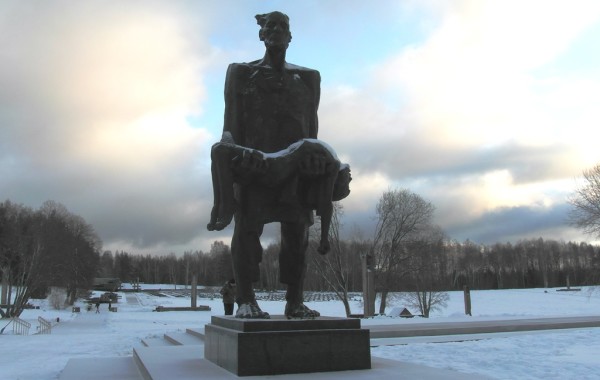
The grounds are laid out as the village of Khatyn once was. Twenty-six structures mark the locations of the 26 homes in the village that were burned to the ground, each consisting of a concrete foundation, a symbolic open gate and an obelisk crowned with a bell. Plaques on the obelisks identify the deceased, listing the ages of any children, and all of the bells ring together every 30 seconds.
The 30 second intervals of the bells represent the rate at which citizens of Belarus were killed during World War II.
On a gray day in January with almost no one else at the site and surrounded by silence, it was an eery sound.
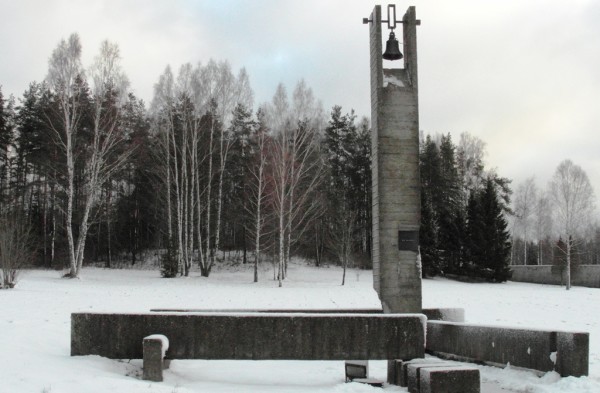
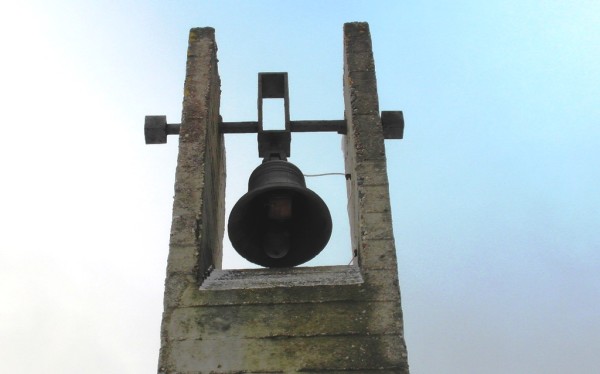
The Baranvosky family lost eight children in the massacre. The ninth, 12-year-old Anton, survived by laying still among the other dead bodies.
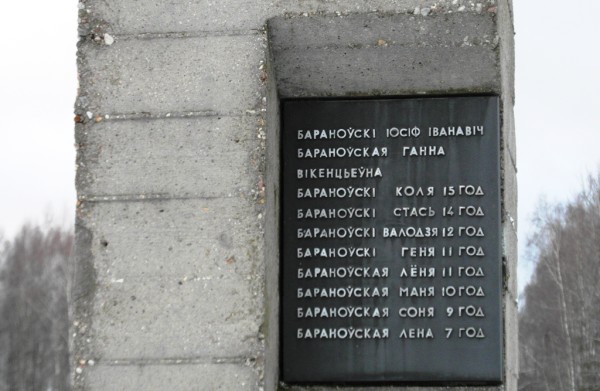
A symbolic cemetery serves as a memorial for the other 185 villages in Belarus that were burned to the ground by the Nazis. Each village has a “grave” with its name, the name of the region where it was located, and an urn with soil from the village.

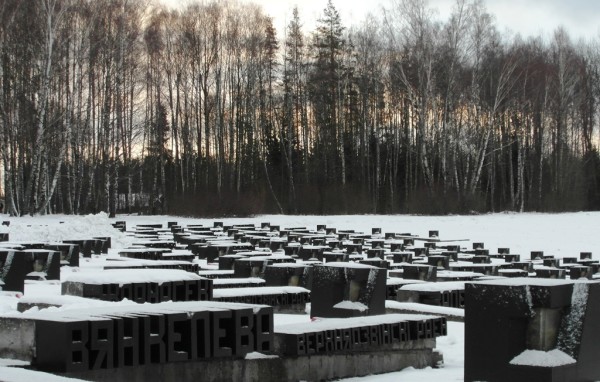
Khatyn also includes several “trees of life” with the names of the 433 villages that were later rebuilt after the Nazis burned them down and killed their inhabitants.
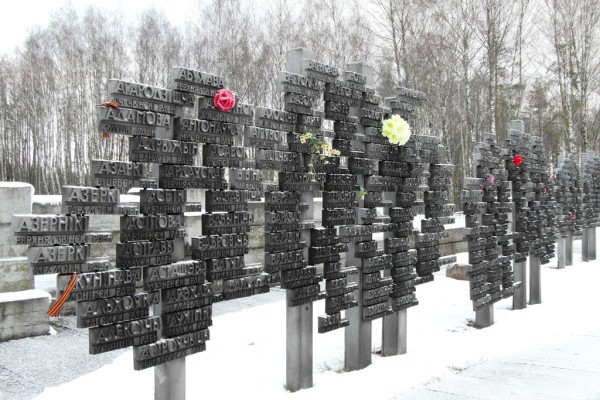
Finally, an eternal flame memorializes the 2,230,000 citizens of Belarus who were killed during World War II.
Over two million people – one out of every four.

(Note: Khatyn should not be confused with Katyn – the site in western Russia where the Soviet secret police murdered thousands of Polish officers in 1940. The two are inextricably linked, however, due to the fact that some say the Soviets later created the Khatyn Memorial to divert attention from what happened at Katyn.)
